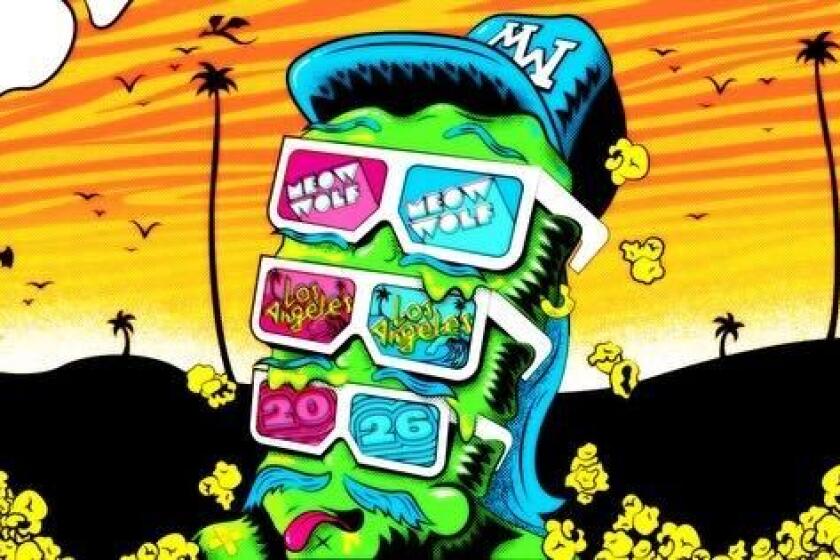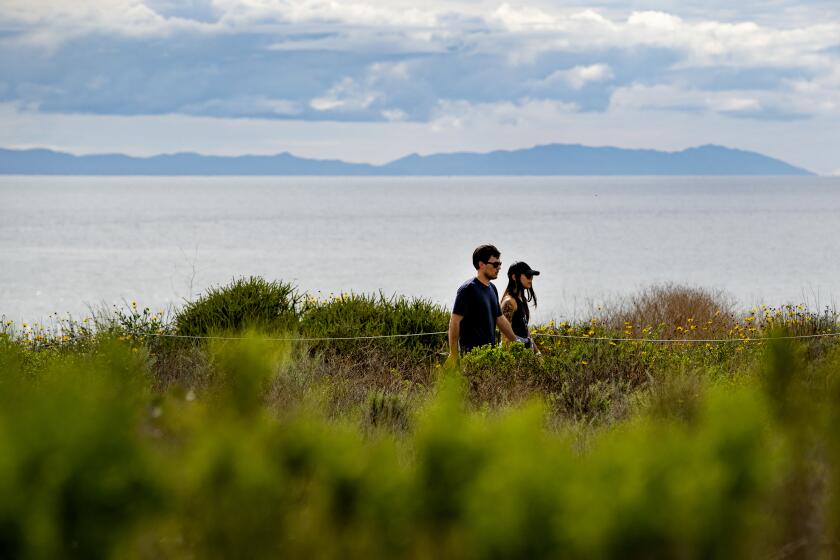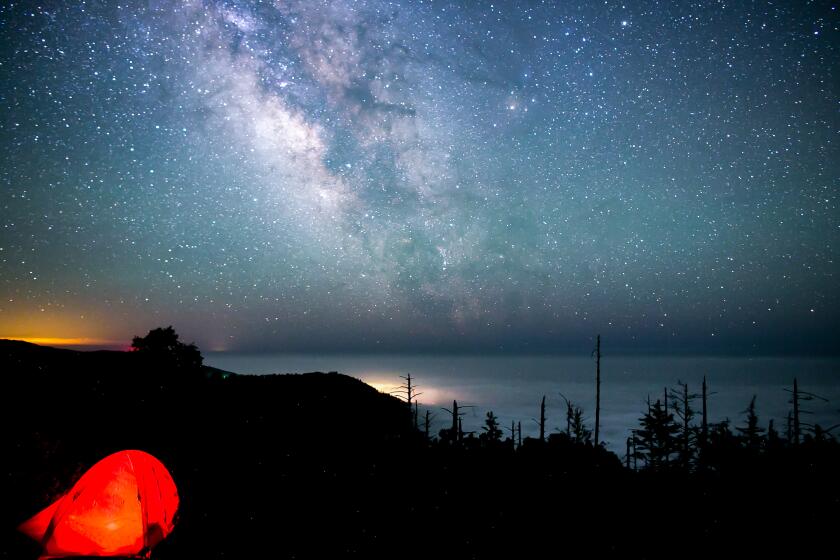Those Views from Himalayan Peaks Can Only Be Had for a Steep Price
So you think you’re a good cyclist? Try Nepal. I did, and I can assure you that riding in that Himalayan kingdom is mountain biking with a capital “m.”
My adventures occurred almost by accident. Attending a dinner one night in Katmandu several months ago, I mentioned that I was an enthusiastic bike rider back in the United States.
“A group of us are going mountain biking tomorrow,” a table companion said. “Would you like to come?” He belonged to a club called the Gear Wallahs, made up of Westerners who live and work in Katmandu, he explained. Each Sunday morning they tackled a new route.
The opportunity was too good to pass up. At 8 the next morning, dressed in tights, shorts, a sweat shirt and his extra helmet, I found myself bouncing on a borrowed fat-tire bike over the dirt streets of Patan, the town adjoining Katmandu, following my new friend.
Shortly after I left Nepal last spring, Patan turned out to be one of the centers of revolutionary activity when protesters swarmed through the streets demanding more democracy. The riots brought down the government of Nepal and forced King Birendra, once an absolute monarch, to agree to reforms incorporating multiple political parties and a constitution.
According to a Nepal specialist with the U.S. State Department, the political turmoil that rocked Katmandu and Patan was not aimed in any way at visiting Americans. Demonstrations ended in late spring. The State Department says the country is quiet right now, although it suggests that tourists act with “caution.” Americans are urged to be aware that there is an unsettled political situation, and to register with the U.S. Embassy upon arrival in Nepal.
I’m not sure Katmandu will ever be perfectly safe for timid Western mountain bikers. My first half-hour of cycling was the hairiest. The streets of every Nepalese city teem with people, cars, bicycles, trucks, dogs and an occasional cow. Weaving through such chaos requires quick reflexes, steely nerves and a working bicycle bell.
I had the latter, which made for a good start. By the time we came to the meeting place on Ring Road, which encircles greater Katmandu and Patan, the nerves and the reflexes were making progress.
About 20 Gear Wallahs showed up, included an American dentist and his wife, a teacher, a professor of linguistics, a Peace Corps volunteer and several members of the Agency for International Development. We rode single-file east of town, occasionally dismounting in a hurry as huge trucks or buses roared past.
Miraculously, the traffic thinned within half an hour. One right turn onto a good, hard dirt road and we were climbing rapidly into rural countryside, with a forest on one side and picturesque valley views on the other. We followed irrigation ditches along rice paddies, passing thatch-roof houses in tiny villages.
The foothills of the Himalayas, rising out of the morning mist, began to materialize in the distance like a scrim on a theater stage. I did not have a whole lot of time to gaze at them, since I had to pay close attention to the boulders, bricks and other paving materials on the road. My companions were very tolerant when I was forced to walk my bike up some extra steep inclines.
We meandered over paths as rough as any I have ridden in either the Rockies or the Green Mountains of Vermont. Luckily, several Gear Wallahs spoke fluent Nepali, since we kept on getting lost or running out of road. Occasionally, we had to portage our bikes across streams or over rock piles.
It was exhausting . . . and exhilarating. Even though we were only about 10 miles outside the Nepalese capital, I felt as though I was seeing a patch of rural Asia from an entirely new perspective.
After three hours of rambling, bumping, speeding and grinding, we were suddenly back at a sure sign of civilization: a town with a large “Vicks Vapo-rub” billboard painted on the side of a building. Within a half-hour, we were back in the bustling streets of Patan.
My appetite thus whetted, I was delighted the next morning to meet Frances Higgins, an Atlanta native who runs Himalayan Mountain Bikes, a 2-year-old company with an office in Katmandu’s Thamel area. A slender young woman who is married to another American dentist, Frances was the first to offer commercial bike tours out of Katmandu.
“Mountain bikes are perfect for this terrain,” she said, gesturing toward Ganesh Himal, the snow-capped range that towers in the distance over the Katmandu Valley.
I promptly signed up for her two-day excursion to Nagarkot, a village about 20 miles from the capital, where we would spend a night at a charming country inn. According to guidebooks, the views of the Himalayan high peaks from Nagarkot are to die for. What they don’t say is that the same is almost true about getting there by mountain bike.
My Nagarkot adventure began auspiciously. The bike I chose from the company’s inventory was a first-rate Specialized Rock Hopper, a 21-speed, American-made machine. I was fit and acclimatized. (Katmandu itself is situated at only 4,400 feet, about the elevation of Salt Lake City, but Nagarkot is 1,500 feet higher.)
Our group--Frances, Sonam (her Nepalese tour guide), a British tourist and me--rode in leisurely fashion through the Hindu temple area of Pashupathi on a paved road east of town. We passed several scenes memorable for their juxtapositions: a “golf course” located in what looked for all the world like a cow pasture; clusters of traditionally dressed women, huge baskets on their heads, walking beside national guard trucks; domestic cows lolling in front of commercial stalls advertising “photo-copy” and “color film labs.”
In a settlement called Thimi, we stopped to buy brightly painted papier-mache masks of Hindu gods from an old man who was crafting them right there in his stall. The prices were a quarter of what they sold for back in Katmandu. For lunch, we stopped in the center of the medieval city of Bhaktapur, noted for its architecture, pottery and wood carving.
While children gathered around our fancy bikes, Frances and I climbed the steps of the magnificent Nayatapola Temple, a five-story pagoda whose stairway is flanked by gigantic pairs of sculptures--two wrestlers, then two elephants, two lions, two griffins and two goddesses.
We ate lunch in a three-tiered cafe close to the temple, rode the cobblestone streets to see the city’s famous buildings and finally headed up toward Nagarkot.
“Up” was the operative word. As the road climbed into the hills, it became steeper, until we began to turn on a series of switchbacks. Panting, sweaty and supremely happy, I peddled the final 10 kilometers in the bike’s “granny” gear.
There were tantalizing views of hills at every twist in the road--but each one revealed only a higher hill behind it. A Gray Line bus filled with tourists passed us, belching fumes. Wimps, I thought to myself.
Suddenly, we were “there,” although there was no “there” there in the town of Nagarkot, in Gertrude Stein terms. It was simply a few shops and minimalist hostels. But we were on top of the world--or at least high above everything else in the Katmandu Valley.
The high peaks of the Himalayas glowed to the north, the setting sun changing the color of the snow from white to pink to gray as we stared at them. The Gray Line bus had already departed. It felt as though we had Nagarkot and its amazing vista all to ourselves.
Our lodging turned out to be quite rustic. The Nagarkot Guest House had individual rooms, each with several beds, two communal bathrooms with indoor plumbing, and a cozy, country-inn atmosphere. But there was no electricity and no heat save a smoky fireplace, which we gathered around and drank beer (plain but tasty and filling) until dinner was served by the light of gas lanterns.
In the morning, we careened down the ridge along a different, unpaved hard dirt road. There were enough unexpected hairpin turns, potholes and streams to get the adrenaline flowing in even the most experienced mountain biker. Then we returned to a paved road for the ride home via Bhaktapur to Katmandu.
Even though my hands were sore from braking so much on the downhills, even though my lungs were pushed to their limits, I believe mountain biking is the best way to explore the Katmandu Valley. It’s faster than trekking, more fun than Gray Line touring. It is not for couch potatoes, though. Companies who offer tours caution riders that they must be in good physical shape.
What if, on the other hand, you are a gonzo cyclist and this sounds tame for you? Well, Frances is planning a 21-day mountain bike trip from Lhasa, in Tibet, over several 16,000-foot passes to Katmandu. That could earn gonzo bragging rights for a good long time.
Sign up for The Wild
We’ll help you find the best places to hike, bike and run, as well as the perfect silent spots for meditation and yoga.
You may occasionally receive promotional content from the Los Angeles Times.



